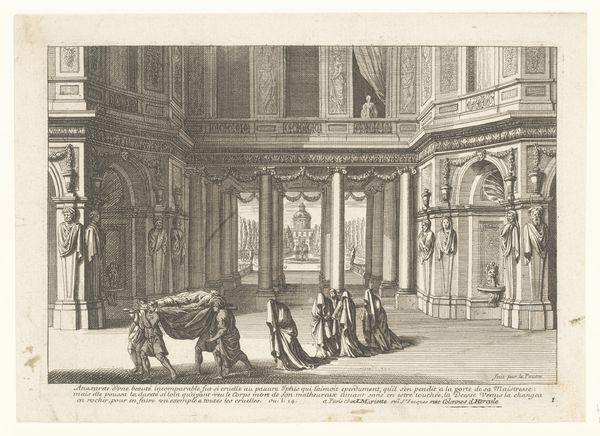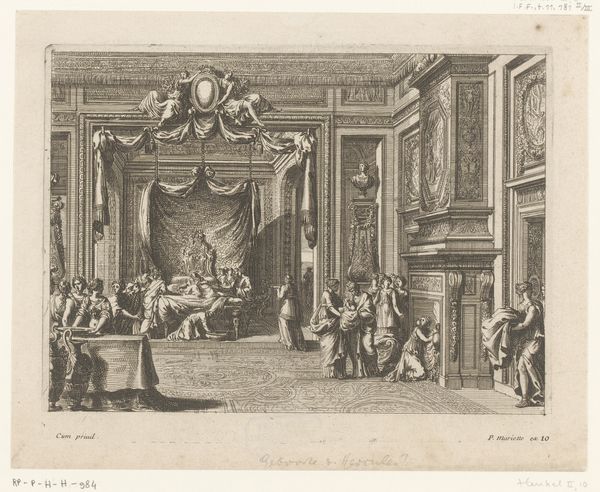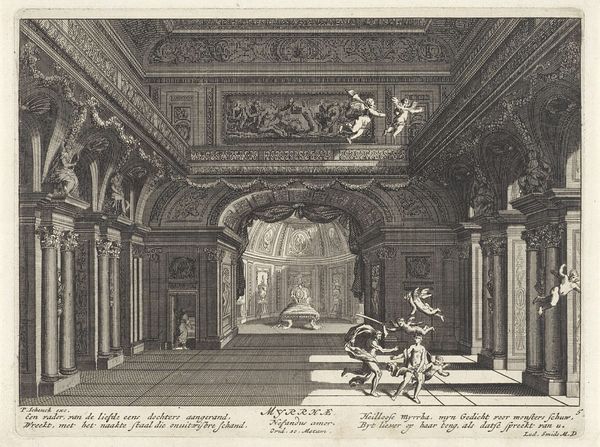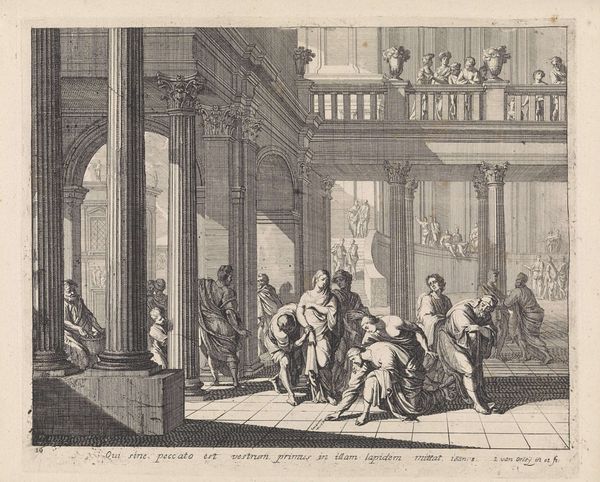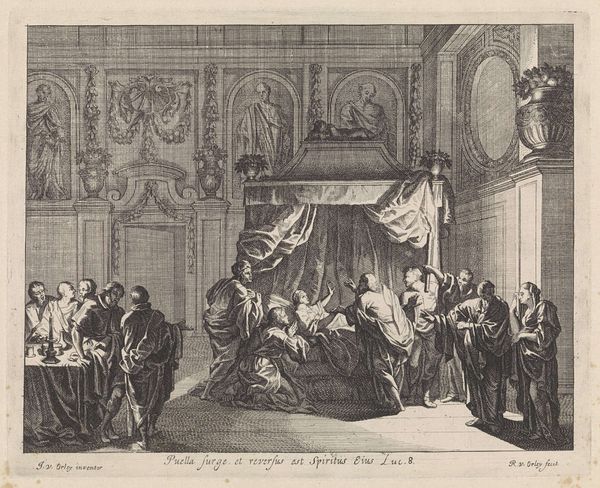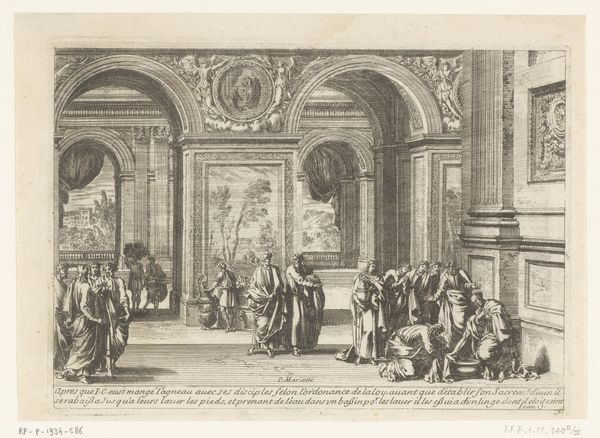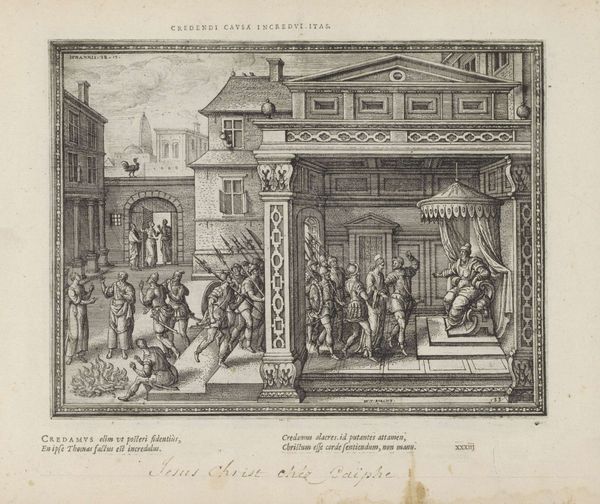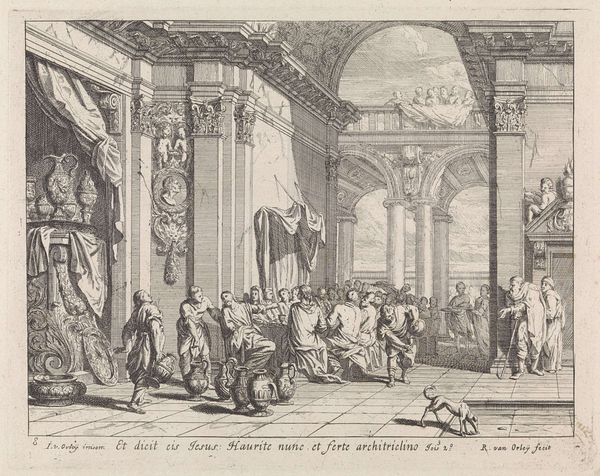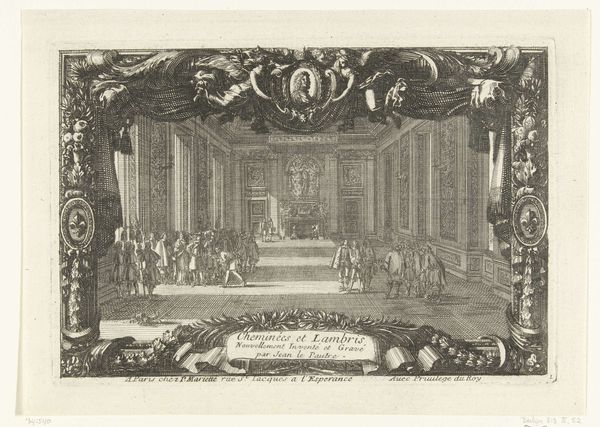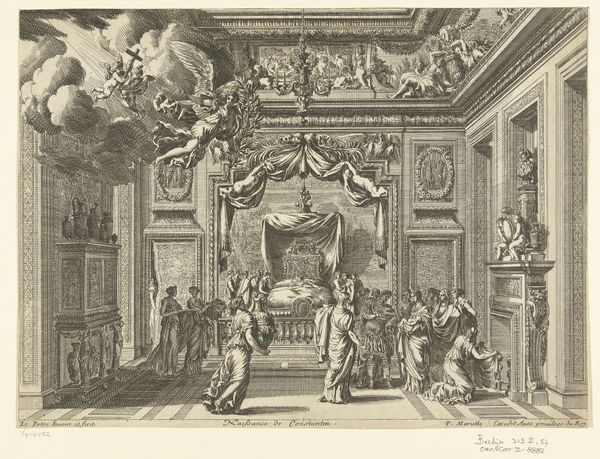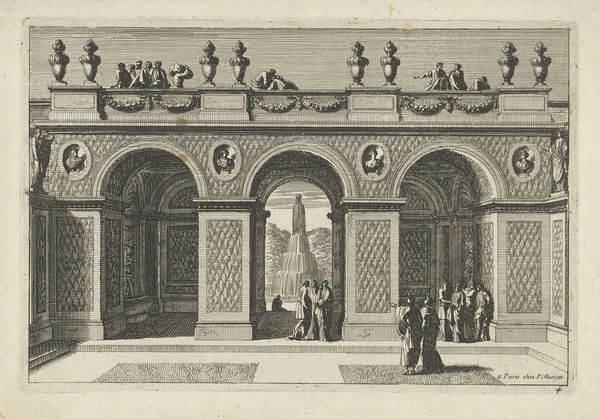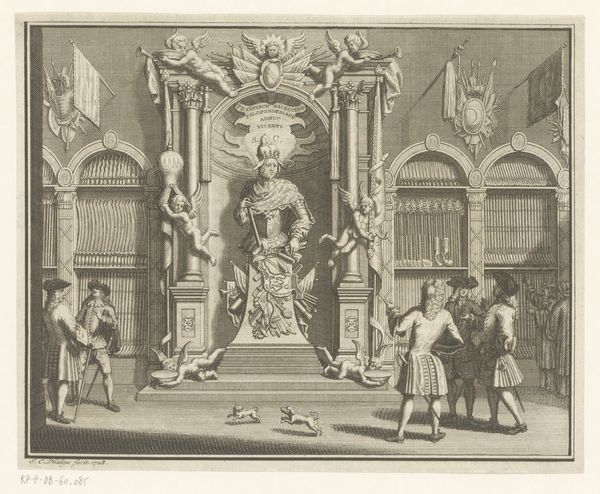
etching, engraving
#
baroque
#
etching
#
old engraving style
#
perspective
#
figuration
#
line
#
cityscape
#
history-painting
#
engraving
Dimensions: height 166 mm, width 221 mm
Copyright: Rijks Museum: Open Domain
Editor: We’re looking at "Anaxarete en Iphis," an etching by an anonymous artist, created sometime between 1675 and 1711. It depicts a procession carrying a body within a grand, almost theatrical space. There's a really somber and formal mood to it. What strikes you most about this piece? Curator: Well, for me, it’s impossible to ignore the performative aspect embedded within. This is an etching of a scene meant to be viewed – the text mentions “Scenarum Theatralium,” explicitly connecting it to the theater. Consider the 17th century context; theater wasn't just entertainment. It was a crucial arena for social and political commentary, wasn’t it? Editor: It was, yeah! So, this etching… is it commenting on something specific? Curator: I believe so. It depicts a moment from Ovid’s Metamorphoses. Anaxarete's cold rejection of Iphis leads him to suicide, and her heart, equally unmoved, is punished by being turned to stone. Do you think that the artist is portraying love's cruelties? Also, is he exploring how art mirrors life through dramatic display? Notice the artist watching in the background, are they inviting a moral lesson or simply showcasing the tragedy? Editor: That's a powerful point. The backdrop certainly reinforces that sense of staging, almost like we, the viewers, are implicated in the spectacle. It reminds me how elite circles viewed art then. Curator: Precisely. And consider how prints like this circulated; they disseminated classical narratives and moral messages far and wide, shaping public opinion. Was it successful I wonder? Editor: I hadn’t thought about the political implications of circulating these stories, of framing it through something mass produced like this. Thanks! Curator: It shows us the power of art to engage and shape us, not just depict beauty.
Comments
No comments
Be the first to comment and join the conversation on the ultimate creative platform.
